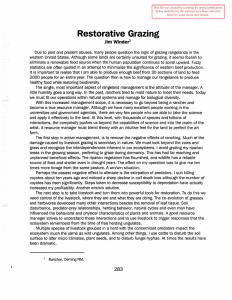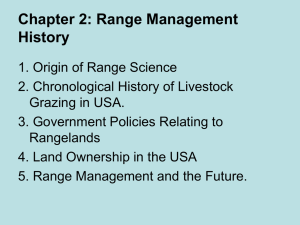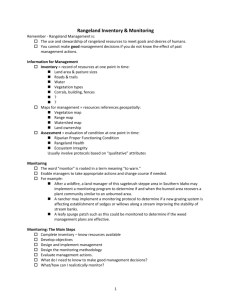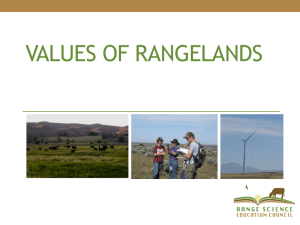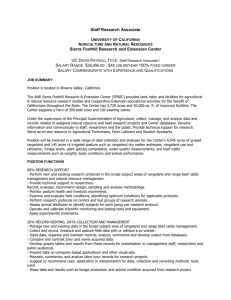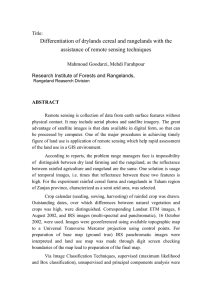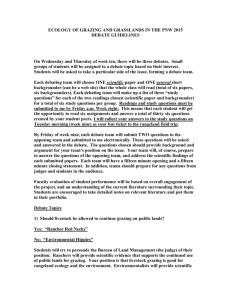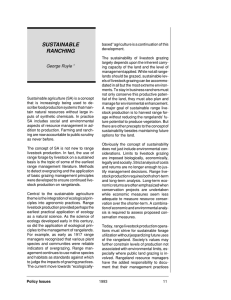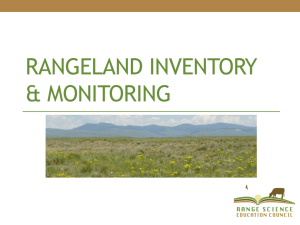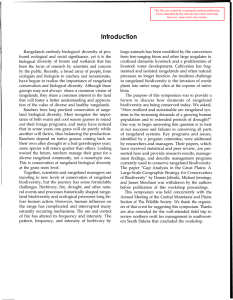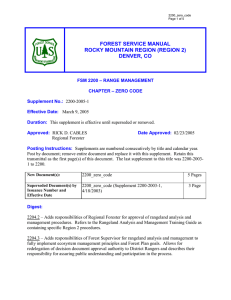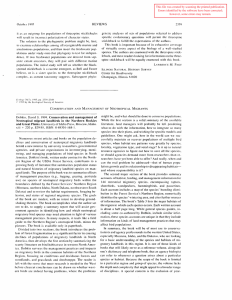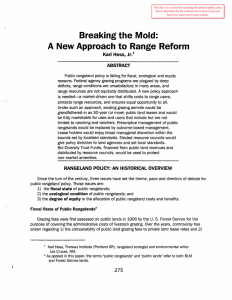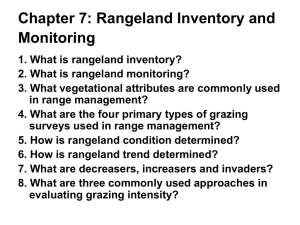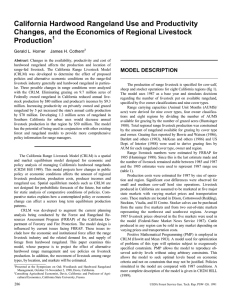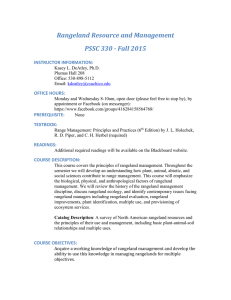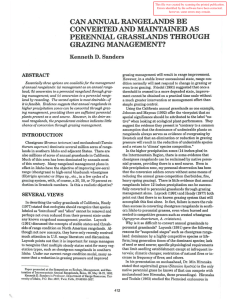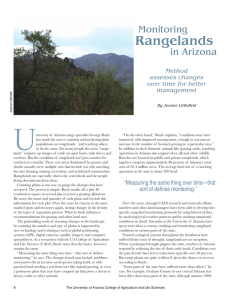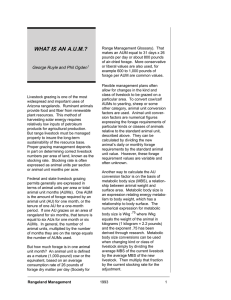History of Rangeland Management
advertisement
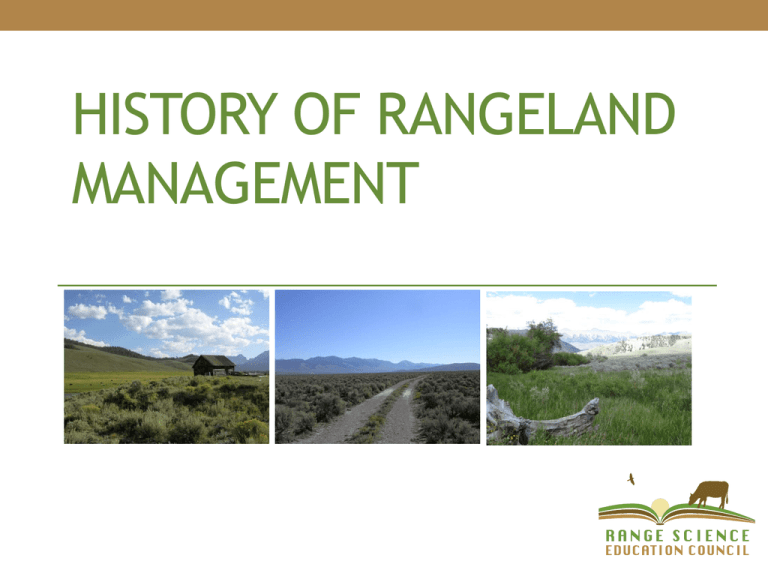
HISTORY OF RANGELAND MANAGEMENT Eras of Rangeland Management (in United States) • Native Americans • Explorers & Trappers • Settlers and Pioneers • Open Range • Homesteaders • Rangeland Scientists • Land Managers Native Americans • Focus on survival • Heavy use of natural products • Early agriculture • Hunting/gathering • Use of fire • Impact on land varied Explorers & Trappers • Cortez in 1515 and Coronado in 1540 – first introduced livestock to North America • Lewis & Clark 1804-1806 • Lands were largely unmanaged – created roads and trails, set the stage for development • Steve Long expedition 1819-1820 described the western range as the “Great American Desert” Settlers and Pioneers Private ownership of land encouraged from late 1800 through early 1900 • Homestead Act in 1862 • 160 acres “proved up” & 5 yrs residence • Enlarged Homestead Act in 1909 • 320 acres “proved up” & 5 yrs residence • Stock Raisers Homestead Act in 1916 • 640 for 50 cows • John Wesley Powell Expedition in 1869 • Realized limitations of western lands • Suggested 2560 acres for each homestead Open Range • After Civil War (1861-1865) • Livestock production boomed • Livestock sold by the “Head” not the “Pound” • Railroads important for livestock sales • Open Range Livestock peaked in 1880 • 1886 drought, low cattle prices, and several bad winters ended the “open range” livestock • Cattle vs Sheep = Range Wars (1870’s) Homesteaders • Had to “prove up” to gain claim. • Settled around water sources. • Affected land ownership patterns seen today. Rangeland Scientists • Discipline of range science and management is completely “American” • Morrill Act (1862) • First degree in range in 1919 • By 1925, 15 universities with degrees • First grazing management research 1910-1915 by Arthur Sampson as Director of Great Basin Experiment Station (Photo from U.S. Forest Service) Birth of Land Management • Taylor Grazing Act 1934 • “.. to stop injury to the public grazing lands and provide for their orderly use, improvement, and development.” • Soil Conservation Act of 1935 • Birth of the Natural Resources Conservation Service (NRCS) Improvement of Rangelands • 1950-60 created great improvement in rangeland health • Control over grazing • Bureau Land Management -1946 • Water developments • Invasive plant control • Reseeding • Range science directed management Environmental Policies 1960-Now • Multiple Use Act 1960 • Wilderness Act – 1964 • National Environmental Policy Act – 1969 • Federal Land Policy and Mgmt Act – 1976 • Endangered Species Act – 1973 • Clean Water Act – 1977 • Range Improvement Act - 1978 Effects of European Humans • Implemented controlled, annual grazing and heavy overgrazing. • Controlled wild ungulates through hunting • Exclusion and control of wildland fire • Farming and planting • Introduced exotic plants and animals. Future of Rangeland Mgmt •? •? •? •? Take home message • Native Americans influence vegetation patterns and animal populations. • European settlers have strongly altered western rangelands. • Whether these changes are “good” or “bad” depends on philosophy of land management. • Much damage to rangelands were created in late 1800’s and early 1900’s.
